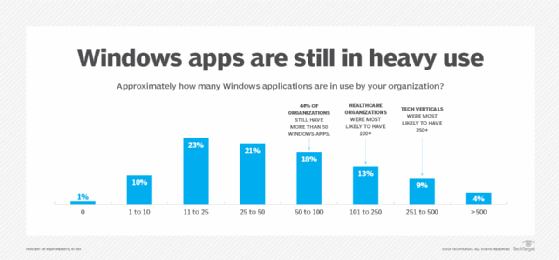
Getty Images/iStockphoto
By acquiring Cameyo, Google fully commits to enterprise EUC
With the acquisition of Cameyo, Google puts ChromeOS into consideration in enterprises alongside thin clients, repurposed PCs or even laptops running Windows.
For me, Google has always been on the periphery of end-user computing, primarily because of its historical lack of acknowledgement of the need for Windows apps in organizations.
I always chalked this up to Google not being able to run Windows apps, so it just chose to ignore them as "legacy" and focus on "modern" organizations -- I can imagine plenty of awkward conversations when showing Google Sheets to a company steeped in Excel macros.
Today, Google acquired Cameyo, a company known for its remote application delivery platform, and for Google, this changes everything.
Why now?
Google's relationship with Cameyo had been tightening over the past few years, to the point where Cameyo's client was integrated into ChromeOS by default in last August -- in hindsight, a sign of things to come. This happened for two primary reasons:
- As Google tried to grow ChromeOS adoption, it kept running up against organizations that had many Windows apps.
- Cameyo made it easy to deliver Windows apps to ChromeOS.
You might say -- correctly -- that any of the desktop and app virtualization vendors can deliver remote apps to ChromeOS, but Cameyo was built to work with Google and to make things as simple as possible.
For example, Cameyo only deploys apps, not desktops, and it can do it using a browser tab or as a progressive web app, which looks like a standalone, seamless app. Cameyo calls this virtual app delivery, or VAD, as opposed to VDI, which is focused on the entire desktop.
This focus on the app, coupled with the joint efforts Cameyo and Google made to ensure a seamless experience -- such as file system and clipboard integration -- ultimately led to the acquisition when the use case proved to be a big enough opportunity for Google.
Google can now have a legitimate conversation with customers that depend on Windows apps -- and there are many of those out there. My research indicates that while 92% of organizations have deployed at least one SaaS/web app to its end users, 97% have deployed at least one Windows app. In fact, 44% of organizations reported having more than 50 Windows apps deployed, each Windows app representing friction from a ChromeOS adoption perspective.
To make any headway in these companies, Google has had to partner with desktop virtualization vendors. While it'll no doubt continue to do that, acquiring Cameyo means that Google will have its own offering as well, and one that in many ways is much simpler for customers that just have a few Windows apps to use.
Google has been expanding its enterprise reach in other areas, too. While it had Chrome Enterprise since 2014, Google recently began to double down on its Enterprise Browser messaging, placing it in the same conversations as vendors such as Island, LayerX, Surf and many others.
With this move, Google envisions Cameyo as an "extension of the cloud endpoint," making it as easy to deploy Windows apps as dropping a "legacy" app into the admin console, configuring access to it and having it show up in Chrome, Chrome Enterprise or in the system tray on a ChromeOS device. That ChromeOS device can be a Chromebook, but it can also be a device that's been repurposed to run ChromeOS Flex, which further extends Google's reach into the enterprise -- not to mention puts it in some of the same conversations as IGEL, Stratodesk and other PC-repurposing offerings.

Overall impact
I'm excited about this acquisition because it signifies a new level of commitment from Google toward the enterprise. For too long, it ignored the customers with Windows apps and focused on the use cases that were browser-oriented, hindering enterprise adoption. By providing its own offering for customers with Windows apps, Google has officially, in my mind, entered the broader end-user computing discussion.
While there is still work to be done, I can see a time in the near future where ChromeOS plus Cameyo is in consideration alongside a thin client, repurposed PC or even a laptop/desktop running Windows, especially for organizations that are more closely aligned with Google than other vendors.
Gabe Knuth is the senior end-user computing, endpoint security, and email security analyst for TechTarget's Enterprise Strategy Group. He writes publicly for TechTarget in addition to his analyst work. If you'd like to reach out, see his profile on LinkedIn or send an email to [email protected].
Enterprise Strategy Group is a division of TechTarget. Its analysts have business relationships with technology vendors.








